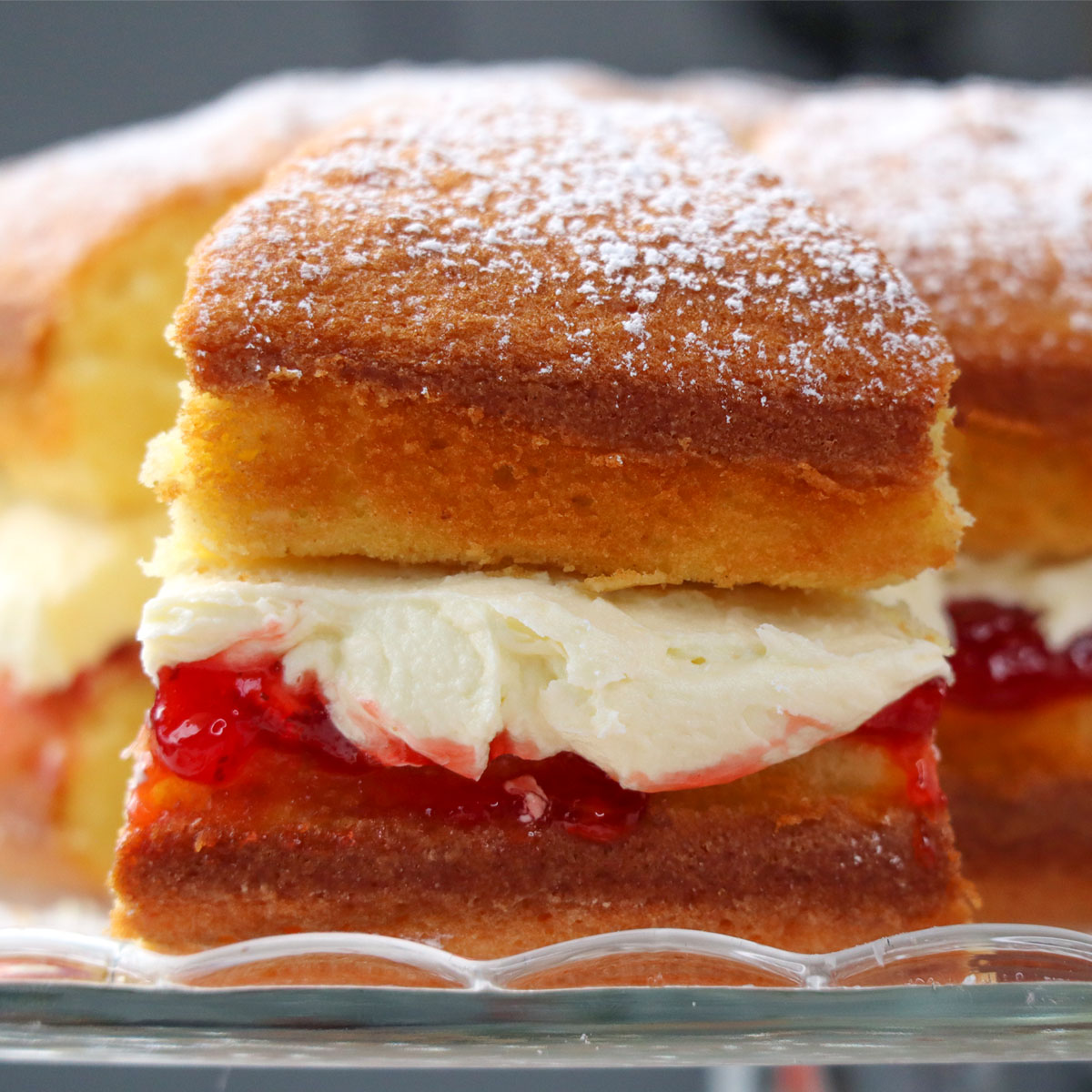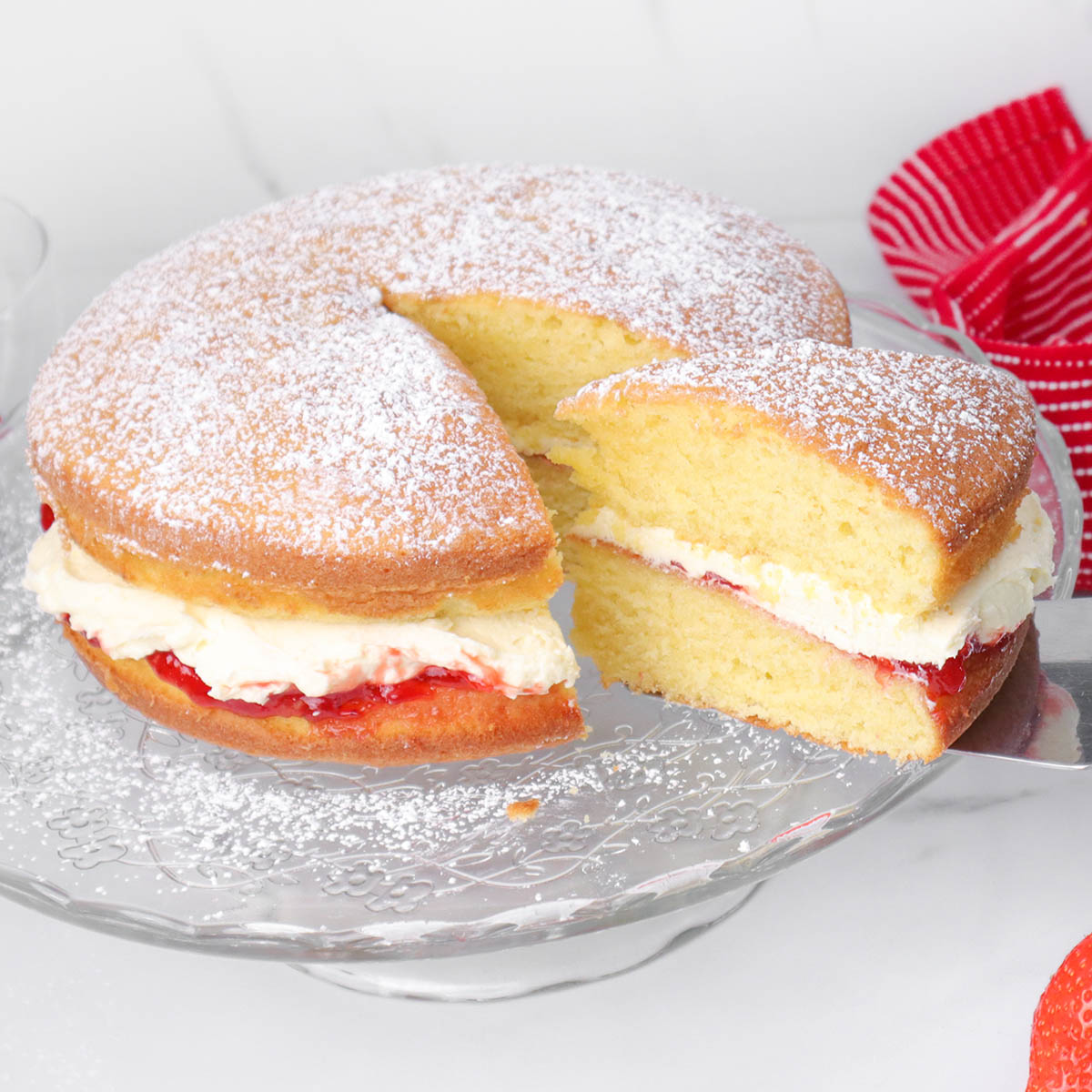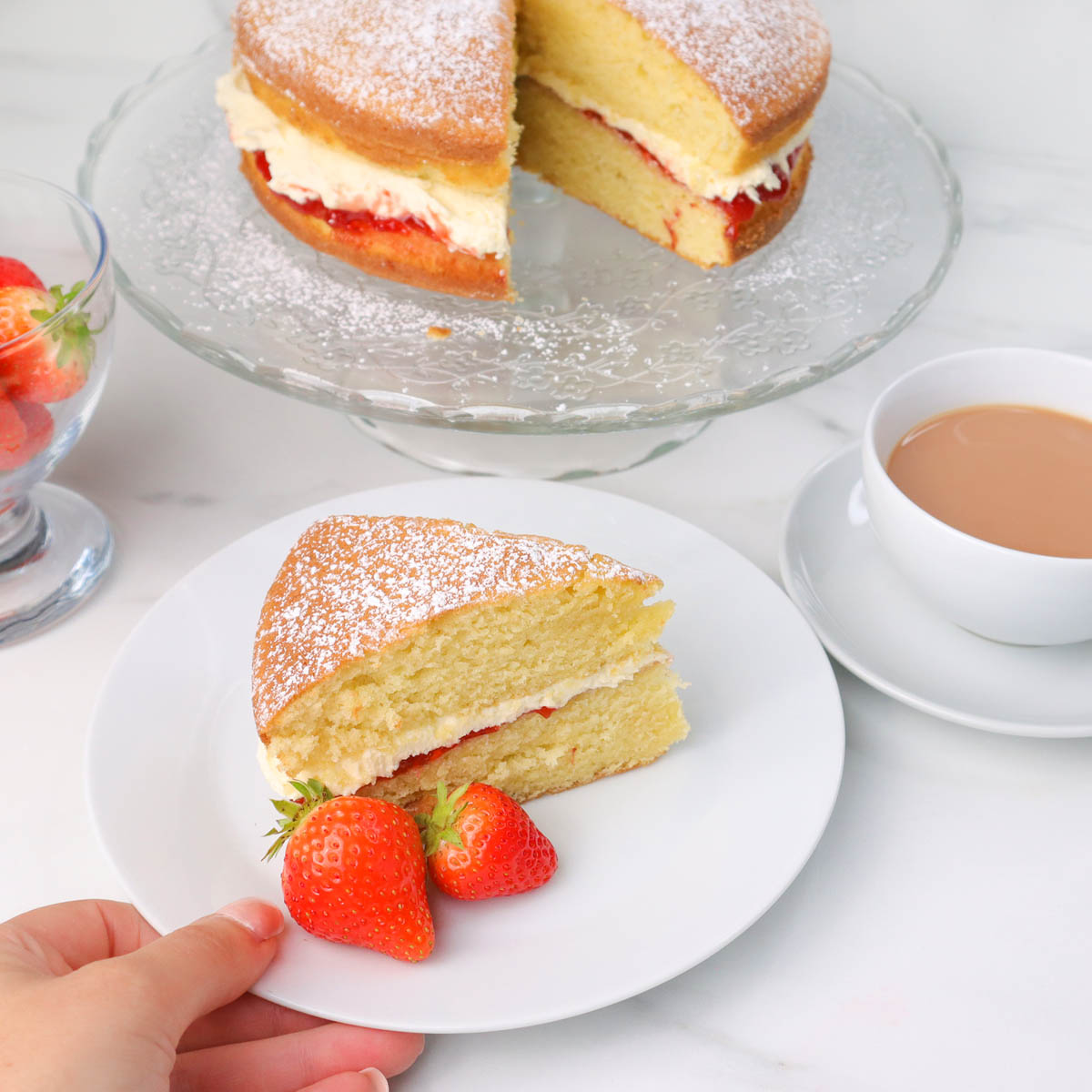Table of Contents
Few cakes capture the charm of British baking quite like the Victoria sponge. With light, airy layers sandwiched with jam and a soft buttercream, it feels timeless and inviting. This is the cake you imagine on a polished afternoon tea tray or cooling on a kitchen counter, dusted with icing sugar and paired with a pot of strong tea.

Baking a Victoria sponge is as much about the ritual as the result. Creaming butter and sugar until pale, adding eggs one by one, folding in flour with care. These are quiet, satisfying steps that connect today's baker to generations before. When two golden rounds rise in the oven and the kitchen fills with the scent of vanilla and sugar, you understand why this simple cake has endured.
A Cake with Royal Roots
The Victoria sponge takes its name from Queen Victoria, who is said to have enjoyed a slice of sponge cake with afternoon tea. The idea of a tender sponge layered with jam became popular in the nineteenth century as tea gained status as a daily ritual. Earlier sponge cakes existed long before the Victorian era, but they tended to be firmer and relied on whipped eggs for lift. The widespread use of baking powder in the mid nineteenth century made lighter, more reliable sponges easier to achieve at home.
Early versions often featured jam alone between the layers. Over time, whipped cream or buttercream became common, and each has loyal fans. The top is usually finished with nothing more than a snowfall of icing sugar. Restraint is part of the cake's appeal. It does not need elaborate decoration. It relies on texture, balance, and a clean, fresh finish.

Why It Endures
The Victoria sponge is approachable for new bakers and satisfying for experienced ones. The method is straightforward. The ingredients are humble. Once you master the basics, the recipe becomes a canvas for gentle variation. Strawberry or raspberry jam are classics. Lemon curd adds brightness. Fresh berries tucked between the layers bring extra freshness. Whipped cream gives a lighter finish. Buttercream holds its shape better and travels well.
What matters most is balance. The sponge should be tender and light, not dry or heavy. The jam should taste of fruit, not sugar alone. The buttercream should be smooth and not overly sweet. When those elements meet in the middle, the result is a cake that feels celebratory without excess.
Tips for a Perfect Sponge
- Use room temperature ingredients. Soft butter and room temperature eggs blend more smoothly and help create a fine, even crumb.
- Cream thoroughly. Beat butter and sugar until very pale and fluffy. This step traps air, which supports the rise.
- Fold with care. Add flour gently to avoid knocking out the air you have built. A spatula and a light hand make a difference.
- Divide evenly. Weigh or eyeball the batter so both tins bake at the same rate and stack neatly.
- Bake until just done. A skewer should come out clean and the surface should spring back to a light touch. Overbaking dries the sponge.
- Cool completely. Filling a warm cake melts the buttercream and can make layers slide. Patience pays off.

A Slice of History at Home
The cake's connection to everyday life is part of its charm. In many British homes, the Victoria sponge appears at school fairs, church fêtes, and family gatherings. Isabella Beeton popularized an early version called Victoria sandwiches in the nineteenth century, and home bakers have been passing down methods ever since. The recipe teaches core skills. Creaming and folding here become the foundation for countless other cakes.
Variations Worth Trying
- Jam only. Keep it traditional with a generous layer of good quality jam.
- Whipped cream filling. Swap buttercream for softly whipped cream for a lighter finish.
- Citrus lift. Add finely grated lemon zest to the sponge or the buttercream for a fresh note.
- Fresh berries. Layer sliced strawberries or raspberries over the jam. Add just before serving to keep the texture lively.
- Syrup brush. Lightly brush cooled layers with simple syrup to keep them tender, especially if serving the next day.
Assembly and Serving
Once the sponges are fully cool, place one layer on a stand and spread the buttercream to the edges. Spoon on the jam and smooth it gently without mixing it into the cream. Cap with the second layer and press with a light hand to set. Dust with icing sugar just before serving. The cake is best the day it is assembled. If you need to make ahead, bake the sponges a day early, wrap them well once cool, and assemble on the day you plan to serve.
Common Pitfalls and Easy Fixes
- Dry sponge. Usually a sign of overbaking or an oven running hot. Check your oven temperature with a thermometer and start testing a few minutes early.
- Dense texture. Often caused by undermixing at the creaming stage or overmixing once the flour is added. Cream longer at the start and fold gently at the end.
- Domed tops. If layers dome, level them with a serrated knife once cool. Next time, make sure tins are not placed too high in the oven and avoid overfilling.
- Sliding layers. Always cool completely before filling. Buttercream should be soft and spreadable, not runny. If your kitchen is warm, chill the assembled cake briefly to set.

Victoria Sponge Cake
Equipment
- 2 Cake tins 8 Inch
Ingredients
- 200 Grams Caster sugar
- 200 Grams Butter softened
- 4 Medium Eggs
- 200 Grams Self-raising flour
- 1 Teaspoon Baking powder
- 1 Teaspoon Vanilla extract
- 2 Tablespoons Milk
For the filling
- 100 Grams Butter softened
- 140 Grams Icing sugar sifted
- 1 Teaspoon Vanilla extract
- 150 Grams Strawberry jam Good-quality
- Icing sugar to decorate
Instructions
- Preheat the oven to 190°C (fan 170°C) or gas mark 5. Grease two 8-inch cake tins and line the bases with parchment paper.
- In a stand mixer, beat 200g of softened butter until smooth. Add 200g of caster sugar and cream together until light and fluffy.200 Grams Caster sugar, 200 Grams Butter
- Add 4 eggs one at a time, beating well after each addition. Then, mix in 1 teaspoon of vanilla extract and 2 tablespoons of milk until combined.4 Medium Eggs, 1 Teaspoon Vanilla extract, 2 Tablespoons Milk
- Gently fold in 200g of self-raising flour and 1 teaspoon of baking powder until the batter is smooth.200 Grams Self-raising flour, 1 Teaspoon Baking powder
- Evenly divide the batter between the two prepared cake tins, smoothing the tops. Bake for 20 minutes or until golden and springy to the touch.
- Allow the cakes to cool in their tins for 5 minutes, then transfer to a cooling rack to cool completely.
For The Filling
- Beat 100g of softened butter until creamy. Gradually add 140g of sifted icing sugar, beating until smooth, and mix in 1 teaspoon of vanilla extract.100 Grams Butter, 140 Grams Icing sugar, 1 Teaspoon Vanilla extract
- Once the cakes are fully cooled, spread the buttercream on the bottom of one sponge. Spread 150g of strawberry jam on top of the buttercream. Place the second sponge on top.150 Grams Strawberry jam
- Dust with icing sugar before serving.Icing sugar
Notes
- Use room-temperature butter and eggs for smoother mixing and a better texture.
- Fold the flour in gently to maintain a light, airy sponge.
- Ensure cakes are fully cooled before filling to avoid melting the buttercream.
- For variety, try using different jams or adding fresh fruit.
- The cake is best eaten fresh but can be stored in an airtight container for up to 2 days.
Nutrition
One thought on “Victoria sponge cake”
Leave a Reply






























It looked awesome and was delicious too. Thanks